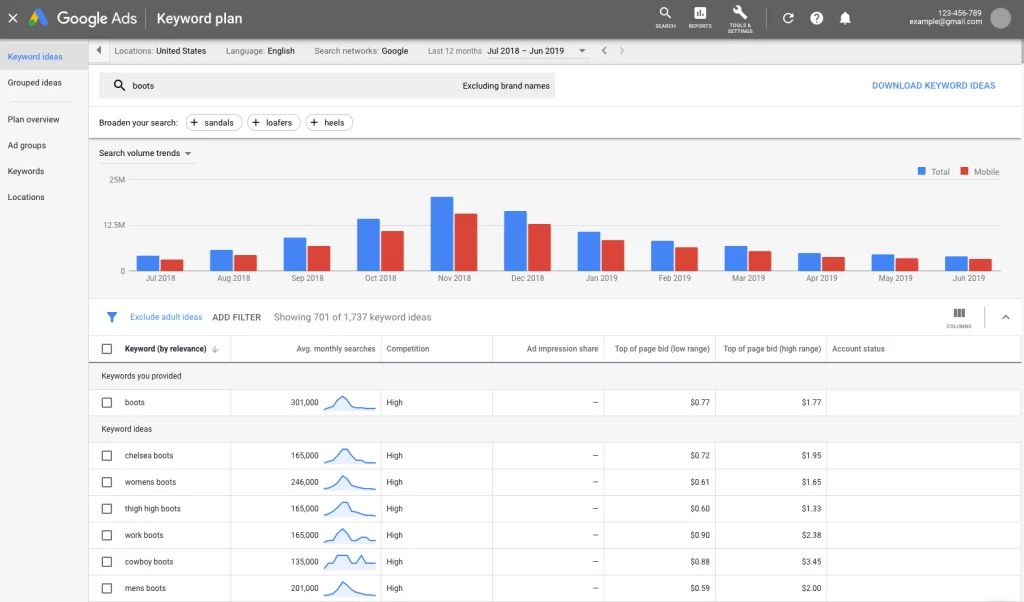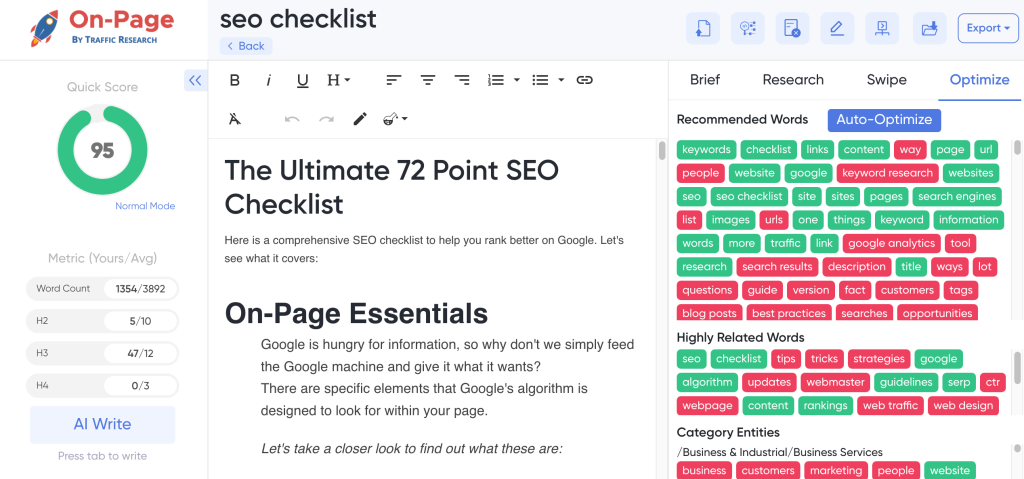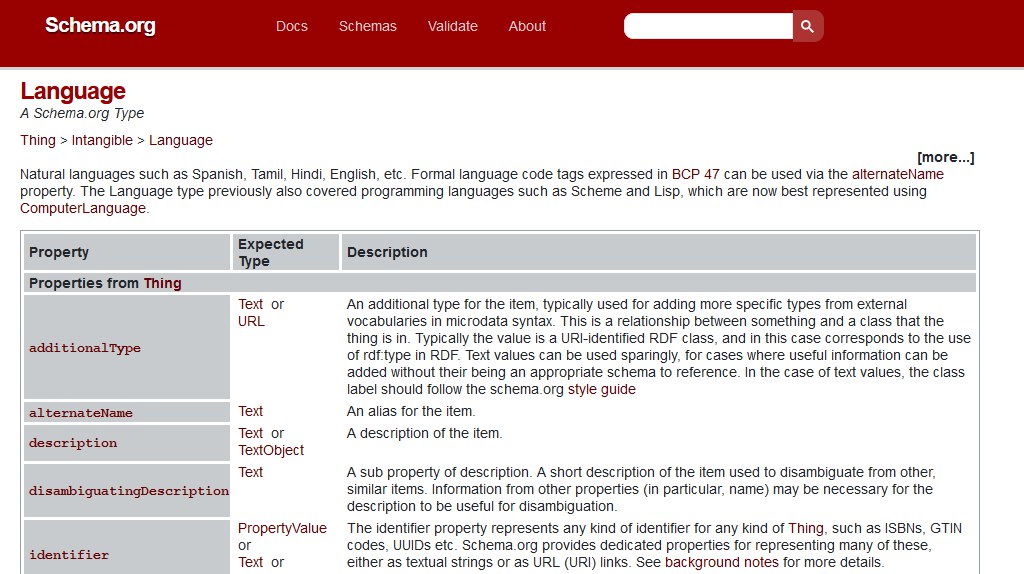
Imagine driving down the highway and suddenly, you’re struck by an intense craving for your favorite pizza. You quickly command your phone, “Find me the nearest pizzeria!” Within seconds, a welcoming voice lists out the top 3 pizza joints nearby, saving you from the tedious task of typing on a small screen while cruising at 70 mph. Welcome to the age of voice search! This effortless exchange is growing in popularity, with more and more internet users shifting to voice queries over traditional text-based searches. Is your content ready to stand out in this phenomenon? Dive into our comprehensive step-by-step guide on optimizing content for voice search and learn how to satisfy those cravings at a moment’s notice!
To optimize your content for voice search, you should aim to use conversational language and address common verbal queries. This can include using long-tail keywords, structured data, and creating a FAQ page. It is important to keep in mind that devices that allow voice search often only list the top one to three results for a given query, so it is crucial to create top-notch content and leverage SEO techniques designed specifically for voice search in order to secure a spot.
Researching Voice Search Queries
Voice search has grown significantly in recent years, with more and more people using virtual assistants like Alexa, Siri, and Google Assistant to search for information online. As a result, optimizing content for voice search has become increasingly important for businesses seeking to maintain a competitive edge in their respective industries.

One of the most important steps in optimizing your content for voice search is researching voice search queries. This involves analyzing how people speak their queries, as opposed to how they type them. One major difference between typed queries and those spoken aloud is that the latter tend to be more conversational in nature.
For example, someone might type “best Italian restaurants near me” into Google’s search bar. But when speaking that same query aloud to a virtual assistant, they may say something like “what are some good Italian restaurants near me?” Recognizing this difference is crucial for creating content that addresses user intent effectively.
To research voice search queries effectively, you can use tools such as AnswerThePublic or SEMrush to identify common questions related to your industry or niche. You can also analyze data from Google’s “People Also Ask” feature to see what types of questions users are asking about a given topic.
It’s worth noting that while voice search queries tend to be more conversational in nature, not all voice searches are questions. Users also use virtual assistants to perform tasks like dictating texts or making phone calls. That said, understanding the types of questions your target audience is likely to ask is still an important part of the research process.
Once you’ve identified common voice search queries in your industry or niche, it’s time to analyze the conversational keywords used in those queries.
Analyzing Conversational Keywords

As mentioned earlier, one key difference between typed queries and those spoken aloud is their conversational nature. This means that voice search queries often contain longer, more natural-sounding phrases than traditional typed queries.
For example, someone typing a query about the best Italian restaurants might simply write “best Italian restaurants” in the search bar. But when speaking to a virtual assistant, they might say something like “where can I find some good Italian places to eat around here?” As such, understanding the conversational keywords used in voice search queries is crucial for optimizing your content.
To analyze conversational keywords effectively, you can use tools like Google’s Keyword Planner or Moz’s Keyword Explorer to identify long-tail keywords related to your target topics. Long-tail keywords are longer phrases usually containing four or more words, that people use to make more specific searches online.
A helpful analogy for thinking about conversational keywords is to imagine having a conversation with someone about your topic. What types of questions and phrases would they use? How would they phrase their queries if they were speaking aloud instead of typing them?
It’s worth noting that while conversational keywords are important for optimizing content for voice search, they should never feel forced or unnatural. Ultimately, your content should be written for humans first and search engines second.
With your list of common voice search queries and conversational keywords in hand, you’re now ready to start adapting your content accordingly.
Identifying Frequently Asked Questions
One effective way to adapt your content for voice search is by identifying frequently asked questions (FAQs). This requires researching the most common queries related to your industry or niche. By understanding the types of questions users ask, you can create content and optimize it for voice search.
For example, if you are running a website that promotes veganism, some common FAQs might include: “What are some vegan recipes for quick dinners?”, “Do vegans get enough protein?”, and “What are some vegan meal delivery services?” Knowing these questions ahead of time will help you tailor your content to answer these queries in a conversational tone that matches the user’s language and speech patterns.
By incorporating FAQs into your content, you also have an opportunity to address potential concerns or objections that users might have. For instance, if someone is considering switching to a plant-based diet, they may be worried about whether they will miss out on certain nutrients. By answering this question in your content, you can reassure them and build trust with your audience.
Some might argue that FAQs are only important for voice search optimization. However, even beyond voice search, including FAQs in your content can improve the overall user experience by providing quick and relevant answers to common questions. Additionally, FAQs can also help with featured snippets on Google’s search results page, which often display answers to frequently asked questions at the top.
Think of FAQs as a roadmap for creating user-focused content. By knowing what questions people ask about a particular topic, you can create content that addresses their needs and interests directly.
Now that we’ve discussed how identifying frequently asked questions can help optimize your content for voice search and improve user experience overall, let’s move on to the next step: adapting your content for voice search.
Adapting Content for Voice Search

Adapting content for voice search requires creating content that is both conversational and informative. This means using language that is easy to understand, as well as answering questions in a concise and helpful manner.
For example, instead of using technical jargon or complex sentences, try to use simpler language that reflects how people actually speak to one another. Instead of “Our research identifies the most salient discrepancies between X and Y”, you could write “We looked into the main differences between X and Y”.
Furthermore, adapting your content for voice search also involves including conversational keyword phrases that accurately reflect the user’s intent. Using long-tail keywords can help ensure that your content appears more frequently in voice search results. By incorporating phrases such as “what are the best vegan meal delivery services” instead of simply “vegan meal delivery,” you will be able to optimize your content for voice search queries.
Some might argue that focusing too much on long-tail keywords can result in keyword stuffing or unnatural-sounding content. However, by prioritizing user intent over exact-match keywords, you can create content that not only ranks better in voice search but also resonates with your audience.
Think of adapting your content for voice search like having a conversation with a friend. You wouldn’t want to respond to their question with a long and confusing answer packed with complex words they don’t understand. You would provide them with an easy-to-understand answer that meets their needs.
In the next section, we’ll dive deeper into implementing long-tail keywords and explore best practices for optimizing your content through these keyword phrases.
Implementing Long-tail Keywords
When it comes to optimizing content for voice search, long-tail keywords are an essential component. These keywords typically consist of three or more words and have a lower search volume than shorter, broader phrases. However, they often hold more specific intent and match the conversational tone that voice search commands.
For instance, consider a user who is looking for the best coffee shop in town. They might type “coffee shop” into a search engine if they were doing so from their computer, but if they were using voice search while on-the-go, they may ask “What are the best coffee shops near me?” or “Where can I find a good latte in this area?”. By including these types of long-tail queries on your website or content, you can increase the chances that users will find your website when conducting a voice search.
Additionally, incorporating long-tail keywords allows you to target specific personas or user groups. Instead of just focusing on generic phrases with high traffic volume that may not be relevant to your intended audience, you can use longer, more descriptive terms to connect with people who are already interested in your product or service.
Some argue that targeting long-tail keywords can drive less overall traffic to your website. While this may be true to some extent, it’s important to remember that the goal of voice search optimization is not necessarily to drive as much traffic as possible but rather to connect with users who are actively seeking out information related to your business. By using long-tail keywords strategically, you can attract users who are more likely to engage with your content and take meaningful actions on your site.
So how do you go about implementing long-tail keywords into your content?
The first step is to conduct thorough research and identify specific long-tail phrases that are relevant to your business or industry. This can be done using keyword research tools such as Google’s Keyword Planner or SEMrush. When conducting this research, focus on identifying conversational phrases that take the form of questions or statements.

Once you have identified a list of long-tail keywords, incorporate them naturally into your existing content or create new pieces of content entirely around them. Make sure to use them in a way that matches the conversational tone of voice search queries – for example, incorporating phrases like “near me” or “how do I” instead of just focusing on product names or buzzwords.
Structuring Data for Voice Search Optimization

In addition to incorporating long-tail keywords, structured data is another important element to consider when optimizing your content for voice search. Structured data refers to code that is added to a website or piece of content to provide additional context and information about the page’s content.
For instance, imagine a user asks their voice assistant for the weather forecast in their city. The assistant may pull up data from multiple sources, including websites that have implemented structured data like schema.org or JSON-LD. By providing this additional information, these websites are more likely to appear at the top of voice search results and provide users with accurate information in a format that is easy to understand.
Additionally, structured data can help ensure that search engines understand the intent behind your content and display it correctly in response to voice queries. By marking up specific elements like headings, images, and video content, you can help search engines understand how they relate to each other and provide users with a more comprehensive answer.
Some critics argue that incorporating structured data can be time-consuming and technically challenging for those who are not familiar with coding languages like HTML or JSON-LD. While there is some truth to this, there are also many tools available that make it easier to implement structured data without any technical knowledge.
Measuring the Success of Voice Search Optimization

After optimizing your website and content for voice search, it’s important to evaluate its impact on your search rankings and website traffic. There are a few key metrics to track in order to determine the success of your voice search optimization efforts.
First and foremost, make sure to monitor your website’s overall traffic from voice searches. Use analytics tools like Google Analytics or On-Page.ai to track keyword searches that originated from voice queries. This will help you understand if your website is effectively targeting users who are searching by voice and if they engage with your content once they arrive on the site.

Another important metric to track is the ranking positions for long-tail keywords that you have specifically optimized for through your voice search strategy. You can use a tool like SEMrush or Ahrefs to monitor these specific keyword rankings over time and see if they improve as a result of your optimization efforts.

It’s also helpful to track engagement metrics, such as time spent on site and bounce rates, for visitors who come from voice searches. Is their behavior different than visitors who find your site through traditional text search? Analyzing this data can help you identify areas where you need to focus additional optimization efforts.
For example, let’s say you notice that visitors from voice searches tend to leave your site more quickly than those from traditional text searches. This could indicate that your content isn’t effectively answering the questions being asked via voice queries, or that the user experience on your site needs improvement for mobile devices commonly used for voice search.
Additionally, tracking conversions and revenue generated from visitors who find your site through voice search is crucial in determining the ROI of your optimization efforts. Again, use analytics tools to identify which traffic sources result in conversions and revenue, and compare this data between users finding you through voice and traditional text searches.
However, it’s important to keep in mind that measuring the success of voice search optimization isn’t always straightforward. Voice searches often have a local intent, and tracking conversions from these types of queries can be difficult. For example, a user might ask their voice assistant for directions to your business, but ultimately purchase something later online or in-store.
Think of voice search optimization like planting a seed. While you may begin to see some results quickly, it can take time for your efforts to fully grow and bear fruit. Tracking metrics over time and making data-driven decisions to continuously optimize is key in reaping the benefits of voice search.
Overall, measuring the success of voice search optimization requires ongoing attention and monitoring of several key metrics. By using tools like On-Page.ai, you can easily track and analyze this data to ensure your optimization efforts are aligned with your business goals. Remember that voice search is an emerging technology, so staying ahead of the curve with effective optimization strategies can give you a significant advantage in reaching customers who prefer using voice assistants for their search queries.
Responses to Common Questions with Detailed Explanations
What is the difference between optimizing for text-based and voice-based searches?
When it comes to optimizing for text-based and voice-based searches, there are some key differences that marketers need to keep in mind. The most notable difference is that voice searches tend to be more conversational, with users posing questions in a natural language format as opposed to typing in fragmented keywords. This means that voice search optimization requires a focus on long-tail keywords and phrases that mimic the way people speak.
According to a study by BrightLocal, 58% of consumers have used voice search to find local business information within the last year. Furthermore, Comscore predicts that by 2022, half of all searches will be done through voice commands. These statistics highlight the importance of optimizing for voice search and adapting digital marketing strategies accordingly.
Another factor to keep in mind is that voice searches tend to prioritize featured snippets, with Google Assistant replying with spoken answers that directly address queries rather than providing a list of links. Therefore, optimizing for featured snippets should be a priority when it comes to voice search.
Overall, while there are similarities in optimizing content for text-based and voice-based searches, such as the importance of quality content and website speed, there are unique differences that require a strategic approach in order to fully optimize for both types of searches.
What are the best practices for structuring content to rank well in voice search results?
To optimize content for voice search, it’s essential to structure it in a natural language format that aligns with how people speak. Here are the best practices:
1. Use conversational language: When people use voice search, they tend to use natural language instead of typing keywords into a search engine. Therefore, including questions and phrases that closely mimic how people speak can help your content rank better.
2. Create concise answers: Voice assistants like Alexa and Google Home often provide short and simple answers to their users’ queries. Hence, creating crisp content that succinctly answers specific questions can make your content more likely to appear in voice search results.
3. Utilize structured data: Structured data provides search engines with context and makes the content easier to understand for machines. Using schema markup can enable crawlers to identify information about your website or page’s relevant topic easily.
4. Optimize for local search queries: People conducting voice searches tend to be looking for nearby products or services. Therefore, optimizing your content for local search queries is vital. This can be done by including location-based keywords and integrating Google My Business, which helps businesses rank higher in local searches.
In conclusion, optimizing your content for voice search takes into account the nuances of how people interact with devices like smart speakers actively. Embrace conversational tone, focus on clear and concise information delivery, leverage structured data, and prioritize local-centric optimization practices to stay ahead of the curve!
How can keyword research be adjusted for voice searches?
When it comes to optimizing content for voice search, keyword research is still a crucial step. However, the approach to keyword research needs to be adjusted as voice searches typically involve more long-tail keywords compared to text-based searches.
Long-tail keywords usually consist of three or more words and are more specific in nature. People tend to use more natural language when speaking than typing, so they are more likely to ask questions instead of using shorter phrases that they would typically type into a search engine.
According to Google, 41% of adults and 55% of teens use voice search daily. This trend is expected to continue growing in the future as smart speakers and virtual assistants become more prevalent in households worldwide. Besides, long-tail queries are expected to increase from ~70% today to an estimated ~90% by 2025.
Therefore, it’s important to focus on conversational and long-tail keywords when conducting keyword research for voice search optimization. Use tools like AnswerThePublic or SEMrush’s Topic Research Tool to identify questions people might ask based on your target topic. You can also refer to Google’s “People also ask” section at the end of Search Engine Results Pages (SERPs) for inspiration.

In summary, optimizing content for voice search requires understanding how people naturally speak and use long-tail keywords instead of short phrases, focusing on questions people might ask related to your target topic. With the increasing popularity of voice search technology, adjusting your keyword research strategy accordingly will go a long way towards helping your content remain relevant and discoverable in a rapidly changing landscape.
Are there any tools or plugins specifically designed to help with optimizing content for voice search?
Absolutely! There are now several tools and plugins available that are specifically designed to help with optimizing content for voice search. These tools can make the optimization process easier and more effective by providing valuable insights into how people are using voice search and what types of queries they are using.
One example of a tool that is great for optimizing content for voice search is AnswerThePublic. This tool gathers data from Google autocomplete and generates a list of questions people commonly ask about a particular topic. Marketers can then use this information to create content that directly answers these questions, making it more likely that their content will appear in voice search results.

Another helpful tool is Schema Markup. This tool helps search engines understand the structure of your content and makes it easier for them to deliver relevant information to users. By adding schema markup, you can ensure that your content is optimized for both traditional search engines and voice assistants.

In conclusion, there are several tools and plugins available that can help with optimizing content for voice search. These tools provide valuable insights into user behavior and can make the optimization process more effective. As the use of voice assistants continues to grow, it’s essential that businesses prioritize optimization for voice search in order to stay ahead of the game.
Now, to perform other SEO tasks like content optimization more efficiently, choose an advanced AI-powered content optimizer like On-Page.ai to help you quickly produce SEO-friendly content. Sign up now and let’s get your business set up!




